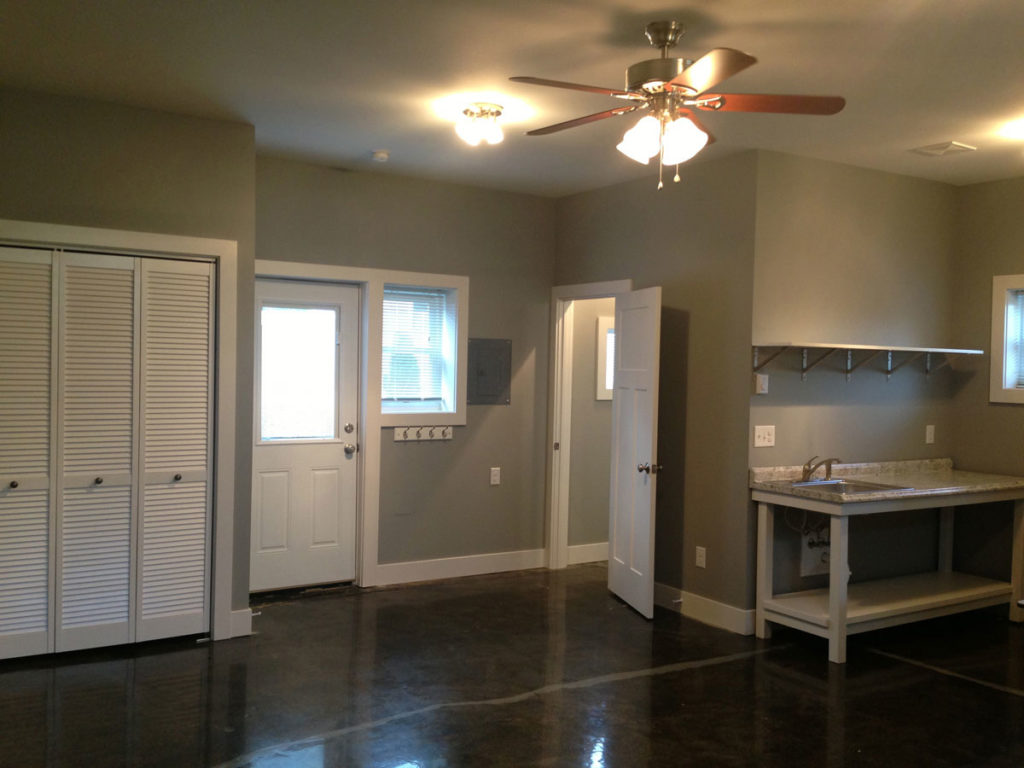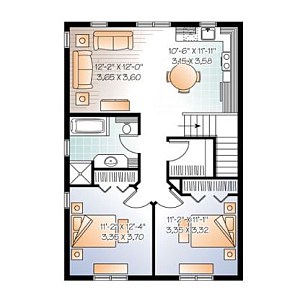
They are ideal for large, bulky items. They can be wall-mounted or freestanding, and they come in a variety of sizes and materials. They can also be inexpensive and provide versatility in both function and appearance.
Wall-mounted storage racks attach to the wall securely using metal brackets. They can be used to hold a wide range of items, from small things like cans to large tools. The units can be purchased in a wide range of colors as well as different designs.
Some wall shelves can be made adjustable so you can adjust the height to suit your needs. This is great for taller items, or to create narrow shelves.
Garage shelving is usually made of wood but can be made from other materials. Your shelves will likely be used frequently so it is important to choose a strong material.

If you intend to store a lot power tools, then consider buying a unit made of aluminum or other strong metals. This will ensure that shelves are resistant to corrosion, warping, and breaking down under heavy use.
Overhead storage shelf
An overhead storage shelf can be a great option if you have a lot to store in your garage. This rack attaches directly to your wall studs, maximising storage space. They're great for seasonal items you don't use every single day like holiday decorations or snow blowers.
Lowes has many heavy-duty garage shelves. Pro Series Black 2x8ft Wall Mounted Shelf is 16 feet in size. It can be used as a single or double shelf and has a 600 pound weight.
Another popular garage shelf option is stackable shelving. This allows you to design a storage system that suits your space and your needs. These racks can be stacked vertically or connected side-by-side, and they're easy to install.
These racks feature a robust frame and support cable, and can be adjusted according to your stud spacing. To ensure your satisfaction, they come with a 10-year warranty.

Mounted shelf by Newagewall
This shelf is an excellent investment for dry ingredients, equipment, and other supplies. This shelf is capable of supporting up to 600 lbs and comes with T-Bar laterals measuring 2.25 inches by 1.25 inch. The front perimeter beam is C-shaped and helps distribute weight evenly to protect your items.
It's a good choice for restaurants, kitchens, and other commercial environments. Its sturdy construction makes it safe and easy to use for large volumes.
Wall shelves are available in a variety of materials, including wood and metal. Metal is typically more durable and more aesthetic than wood. It's easier to clean and resists the rust.
FAQ
What would it cost for a home to be gutted versus what it would cost to build one?
Gutting a home involves removing everything within a building including walls and floors, ceilings as well as plumbing, electrical wiring, appliances, fixtures, and other fittings. It's usually done when you're moving into a new place and want to make some changes before you move in. Due to so many factors involved in the process of gutting a property, it can be very costly. Depending on what job you do, the average cost for gutting a house is $10,000 to $20,000
Building a home is where a builder builds a house frame by frame, then adds walls, flooring, roofing, windows, doors, cabinets, countertops, bathrooms, etc. This is typically done after purchasing lots and lots of lands. Building a home can be cheaper than gutting. It usually costs around $15,000-$30,000.
It all comes down to what you want to do in the space. You'll likely need to spend more money if you want to gut a property. You don't need to take everything apart or redo everything if you are building a home. You can build it as you wish, instead of waiting to have someone else tear it apart.
How much does it cost to gut and renovate a kitchen completely?
You might wonder how much it would be to remodel your home if you have been considering the idea.
The average kitchen renovation cost is between $10,000-$15,000. There are ways to save on your kitchen remodel while still improving the space's look and feel.
Planning ahead is a great way to cut costs. This includes choosing a style and color scheme that suits your lifestyle and finances.
Another way to cut costs is to make sure that you hire an experienced contractor. Professional tradesmen are familiar with every step of construction, so they won't waste their time trying to figure it out.
It would be best to consider whether you want to replace or keep your existing appliances. Remodeling a kitchen can add thousands of pounds to its total cost.
Additionally, you may decide to purchase used appliances rather than new ones. You will save money by purchasing used appliances.
You can also save money by shopping around when buying materials and fixtures. Many stores offer discounts during special events, such as Black Friday or Cyber Monday.
What should I do with my current cabinets?
It depends on whether your goal is to sell or rent out your house. If you are planning on selling, you might want to take out and refinish the cabinets. This gives buyers the illusion of brand-new cabinets and helps them visualize their kitchens after they have moved in.
However, if you want to rent your house, you should leave the cabinets alone. Renters often complain about dealing with dirty dishes and greasy fingerprints left behind by previous tenants.
You could also paint the cabinets to give them a fresh look. It is important to use a high quality primer and paint. Low-quality paints may crack over time.
What are the largest expenses when remodeling a kitchen
A few key costs should be considered when planning a kitchen remodeling project. These include demolition, design fees, permits, materials, contractors, etc. Although these costs may seem relatively small, if you take them all together, they can quickly add up. These costs quickly multiply when they are added up.
Demolition is usually the most expensive. This includes removing cabinets, countertops and flooring. You will then need to remove the insulation and drywall. Then, it is time to replace the items with newer ones.
Next, hire an architect who will draw plans for the space. The permits will be required to ensure the project complies with building codes. After that, you have to find someone to do the actual construction.
Finally, after the job is completed, you must pay the contractor. It is possible to spend anywhere from $20,000 up to $50,000 depending on the size and complexity of the job. This is why it's important to get estimates form multiple contractors before hiring one.
You can sometimes avoid these costs if you plan. You may be able to negotiate better deals on materials or even skip some of the work. If you know what needs to be done, you should be able to save time and money during the process.
Many people attempt to install cabinets themselves. They believe this will save money, as they won’t have to hire professional installers. The problem is that they usually spend more money trying to figure out how to put the cabinets in place themselves. The time it takes to complete a job can be completed by professionals in half the time.
You can save money by buying unfinished materials. Pre-finished materials such as cabinets should be inspected before you purchase them. You can immediately use unfinished materials if you purchase them. And if something doesn't turn out exactly as planned, you can always change your mind later.
But sometimes, it isn't worth going through all this hassle. You can save money by planning your home improvement project.
How do I determine if my house requires a renovation or remodel?
First, consider whether your home has been updated in recent times. A renovation may be a good idea if there have been no updates for several years. You might also consider a remodel if your home is brand new.
You should also check the condition of your home. It's possible to renovate your home if there are holes in the walls, peeling wallpaper or damaged tiles. A remodel is not necessary if your home appears to be in great condition.
You should also consider the overall condition of your house. Is it structurally sound? Do the rooms look good? Are the floors well-maintained? These are vital questions to ask when you decide which type of renovation should be done.
Remodeling a kitchen or bathroom is more expensive.
Remodeling a bathroom and kitchen can be costly. However, when you consider how much money you pay each month for energy bills, upgrading your home might make more sense.
It is possible to save thousands every year with a simple upgrade. A few easy changes like adding insulation to ceilings or walls can reduce heating/cooling costs by as much as 30%. Even a modest addition can improve comfort and increase resale value.
The most important thing to keep in mind when planning for renovations is to choose products that are durable and easy to maintain. Solid wood flooring, porcelain tile, and stainless steel appliances last longer than vinyl and laminate countertops and require less maintenance.
You might also find that replacing old fixtures by newer models can reduce utility expenses. By installing low-flow faucets, you can lower your water usage up to half a percent. Up to 75 percent of electricity can be saved by replacing inefficient lighting fixtures with compact fluorescent bulbs.
Statistics
- According to a survey of renovations in the top 50 U.S. metro cities by Houzz, people spend $15,000 on average per renovation project. (rocketmortgage.com)
- About 33 percent of people report renovating their primary bedroom to increase livability and overall function. (rocketmortgage.com)
- 5%Roof2 – 4%Standard Bedroom1 – 3% (rocketmortgage.com)
- Attic or basement 10 – 15% (rocketmortgage.com)
- $320,976Additional home value: $152,996Return on investment: 48%Mid-range average cost: $156,741Additional home value: $85,672Return on investment: (rocketmortgage.com)
External Links
How To
How to Install Porch Flooring
Installing porch flooring is easy, but it does require some planning and preparation. Before installing porch flooring, you should lay a concrete slab. A plywood deck board can be used in place of a concrete slab if you do have limited access. This allows you install the porch flooring easily without needing to make a large investment in a concrete slab.
Secure the plywood (or subfloor) before you start installing porch flooring. Measure the width of your porch to determine the size of the plywood strips. These should be laid along the porch's sides. Then, attach the strips to the walls by nailing them in place.
Once the subfloor is secured, prepare the area for the porch flooring. This usually involves cutting the floorboards' top layer to the required size. You must then finish your porch flooring. A polyurethane finish is common. You can stain your porch flooring. Staining is more straightforward than applying a coat of clear paint. After applying the final coat, you just need to sand down the stained areas.
These tasks are completed and you can install the porch flooring. Begin by marking the location for porch flooring. Next, cut the porch flooring according to your measurements. Then, fix the porch flooring to its place using nails.
If you wish to improve the stability of your porch flooring, you can add porch stairs. Like porch flooring, porch stairs are typically made from hardwood. Some people prefer to put their porch stairs up before they install their porch flooring.
Once you have installed your porch flooring, it is time to complete the project. First, you must remove the porch flooring and replace it with a new one. Next, clean up all debris. Be sure to remove all dirt and dust from your home.